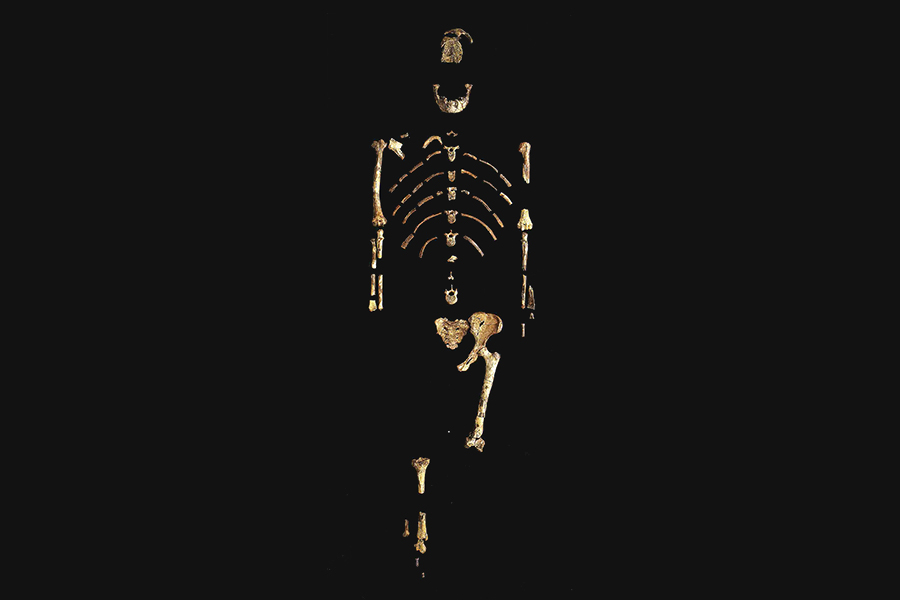The group of hominins informally referred to as australopiths lived between 4.2 and 1.4 million years ago. This group comprises the species recognized in the genera Australopithecus and Paranthropus. They differ from ardipiths and Homo by what is known as postcanine megadontia (extremely large teeth behind the canines–i.e., premolars and molars).

Australopithecus afarensis, popularly known as the fossil skeleton “Lucy.”
Image credit David L. Brill, From Lucy to Language, Simon & Schuster 2006
Unlike the ardipiths, australopiths were committed terrestrial bipeds—diverse, geographically widespread, and anatomically more derived. They lived during a period of pronounced climatic change where climates were shifting from cool and dry to warm and wet periods within short time periods. The derived anatomical traits in australopiths are thought to have been adaptations that enabled them to be behaviorally flexible, particularly in relation to their dietary adaptations.
However, species of the genus Paranthropus, collectively referred to as the “robust” group, were highly specialized in their dietary adaptation. This group includes Paranthropus aethiopicus, Paranthropus boisei, and Paranthropus robustus. They had molarized premolars that helped them increase the chewing surface area of their teeth, and they were adapted to utilizing food resources that were available in open grassland habitats.
The nonrobust australopiths, informally called “gracile” australopiths, appear in the fossil record earlier than the robust species, and some of them might have given rise to the latter. The nonrobust australopiths lived in mosaic habitats, ranging from grasslands and bushlands to woodlands and gallery forests. One of the nonrobust australopiths gave rise to the genus Homo, even though there is no consensus as to which one might be the best candidate.